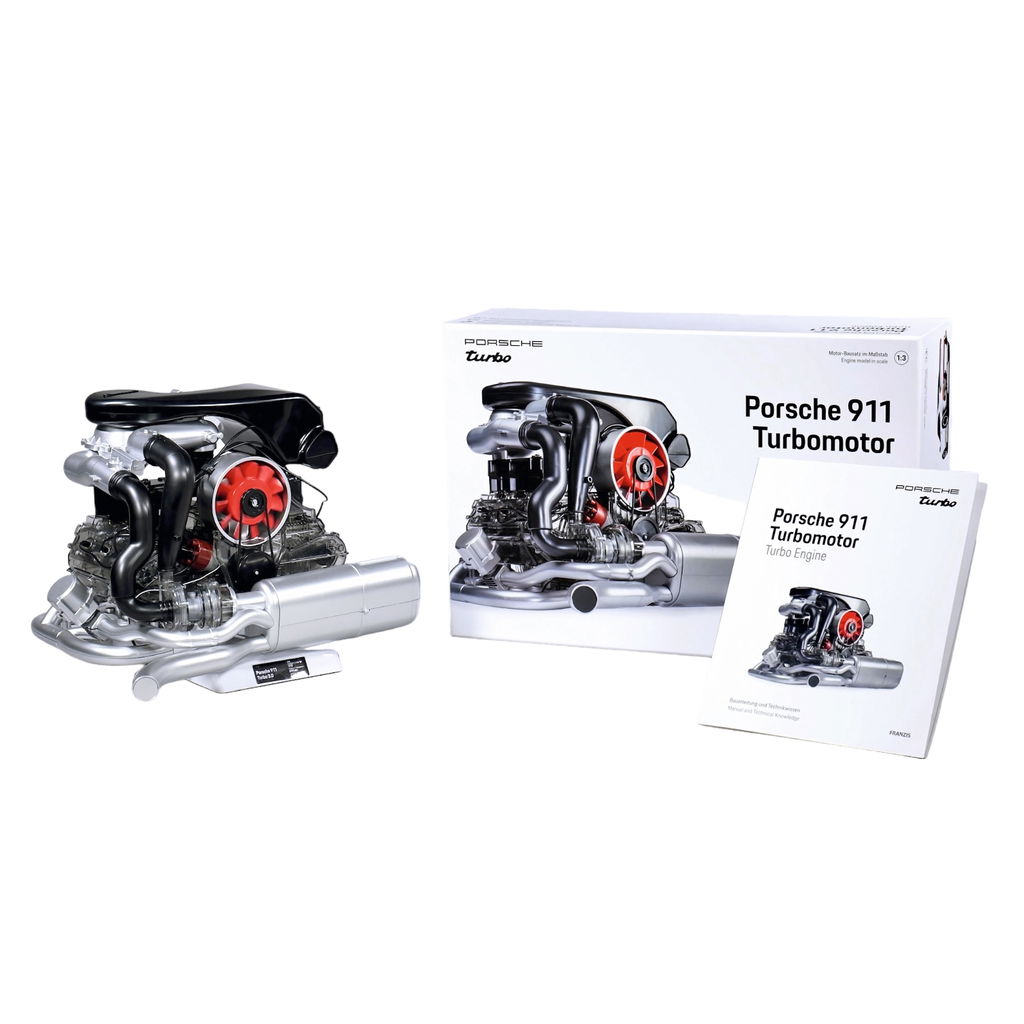A Porsche 911 Turbo is an impressive sight in itself. The air-cooled models in particular have a mighty presence. Many of us have had a Porsche 930 or 964 Turbo as a poster on our bedroom wall. And quite a few consider the 993 Turbo to be the most beautiful Porsche 911 ever built. Just imagine if four of these models were gathered in one place. That way, you could take a closer look at the subtle differences. Just like in a car quartet in the past, you could play the trump cards of the individual models. And now guess what’s waiting for you in the Elferspot magazine today? That’s right, a quartet of air-cooled Porsche 911 Turbos!
Many of us have had a Porsche 930 or a 964 Turbo as a poster on our bedroom wall.
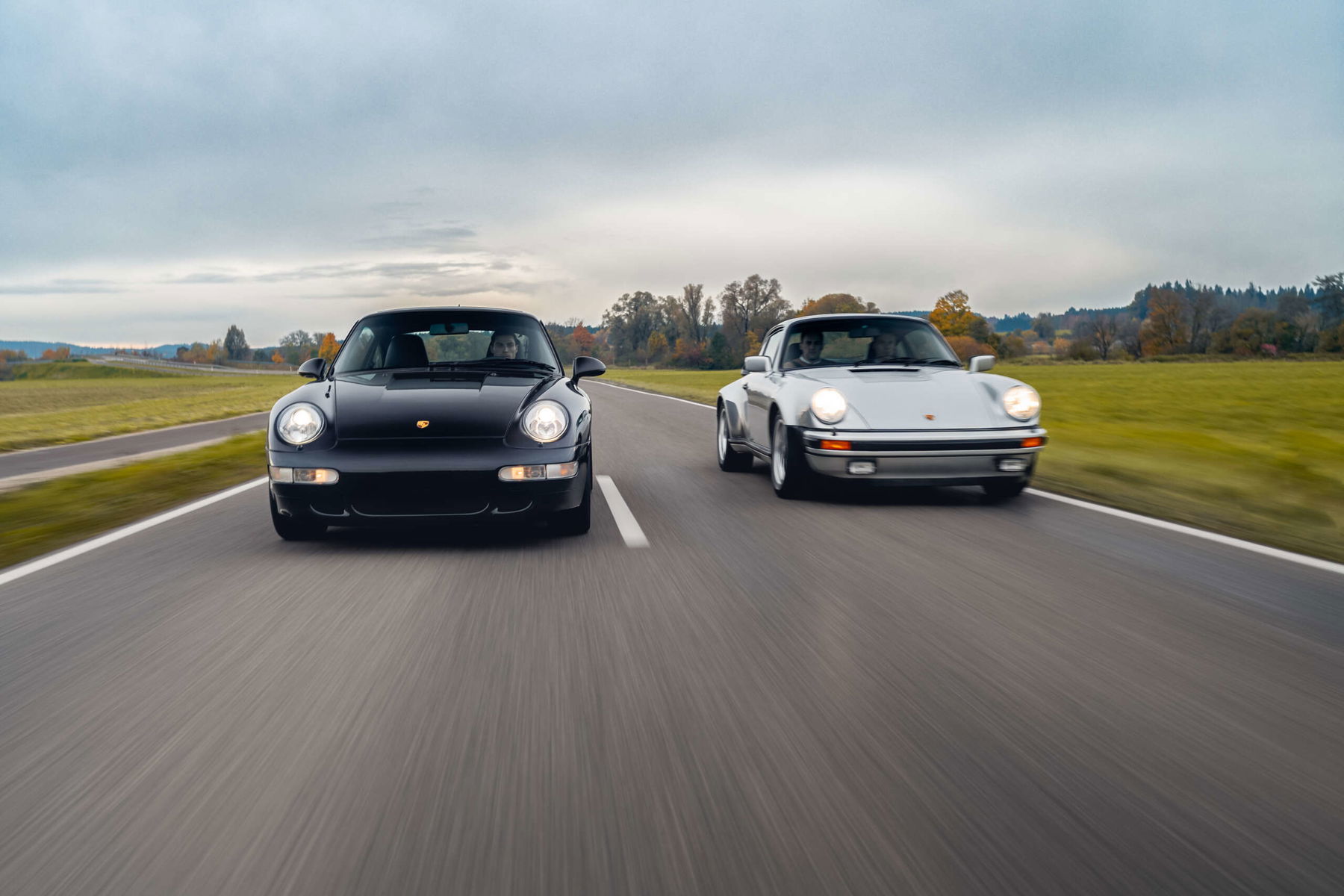
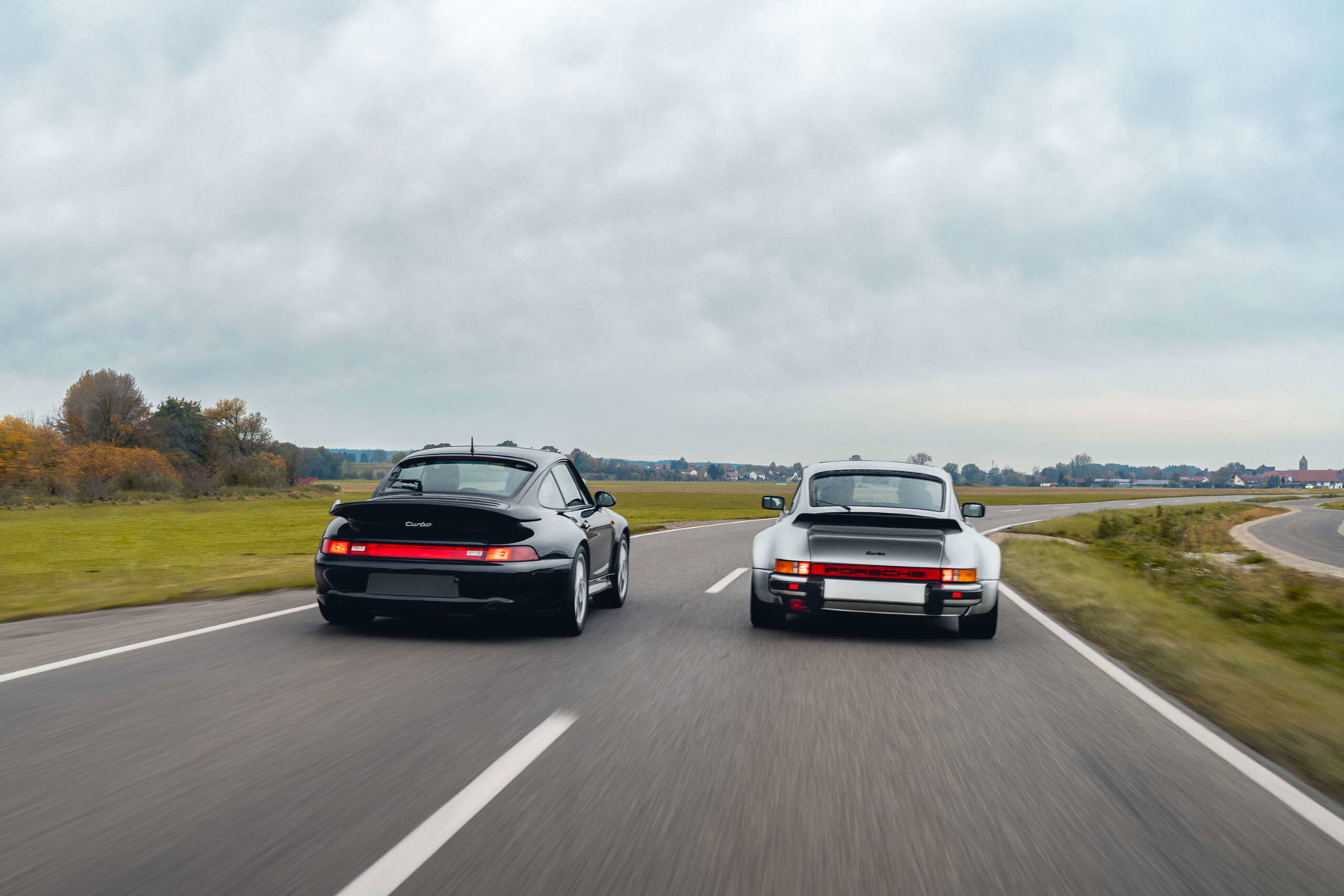
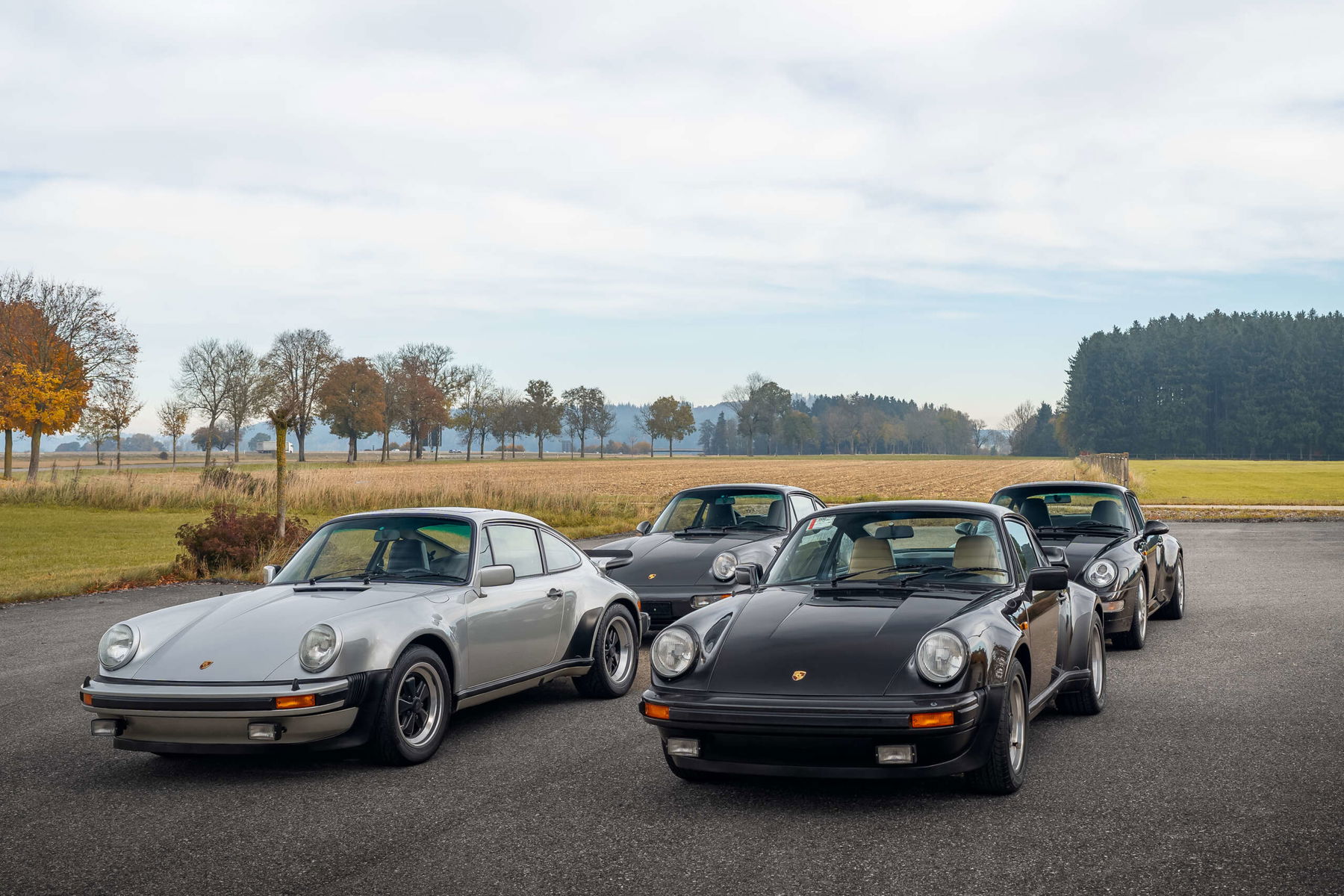

Four Porsche 911 Turbos in one swoop!
This sight has to sink in a bit. We’re talking about one Porsche 930 Turbo 3.0, one 930 Turbo 3.3, one 964 Turbo 3.3 and one 993 Turbo. That makes a total of 1,288 hp, packed into what is probably the most striking car silhouette of all time. It is the stuff, dreams are made of. All four are impressive in their condition and history. They seem like having been preserved in a time capsule. Their muted color scheme makes them look downright innocent.
Today we dig deep in the details of the Porsche 911 Turbo’s evolution. Beginning with its 930 origins, to the very end of the aircooled era. This was made possible by Jan Jansen – owner of JANSEN classische Automobile and proven Turbo expert. He had brought together his very own private turbo quartet for this special photo shoot. In addition to a considerable inventory of air-cooled Turbos for sale, he has also been collecting them privately for several years.

Remarkable at first glance is the almost dainty size by today’s standards. All vehicles have a wheelbase of 2272 mm. With the exception of 20 mm wider hips, there has simply been no growth in size over 20 years. Opposite is the case with the 993 being 46 mm shorter than the original 930 Turbo.
Porsche very carefully refined the air-cooled 911 Turbo’s design
However, the connoisseur immediately spots the differences between the generations. The 260-hp Porsche 930 Turbo 3.0 comes with an accordion bumper and eye-catching headlight washer nozzles. Technically, the air deflector at the rear is a spoiler, not a wing, as it only guides the air above its surface. In addition to providing airflow, it also helps to cool the Porsche 911. In this first iteration, the ducts don’t take all the spoiler’s surface and from the top of it, it looks rather discreet.
On the Porsche 930 Turbo 3.3‘s spoiler, that looks rather different. We’re looking at the first production car in the world with an intercooler. Cooler intake air has a greater oxygen density. This allows more compression and more power. Hence the intercooler. The result: a 300 hp engine with a redesigned cover and continuous cooling fins. From now on, the exhaust gases flowed through two tailpipes instead of one. Moreover, its now integrated washer nozzles ensured a more coherent front end.
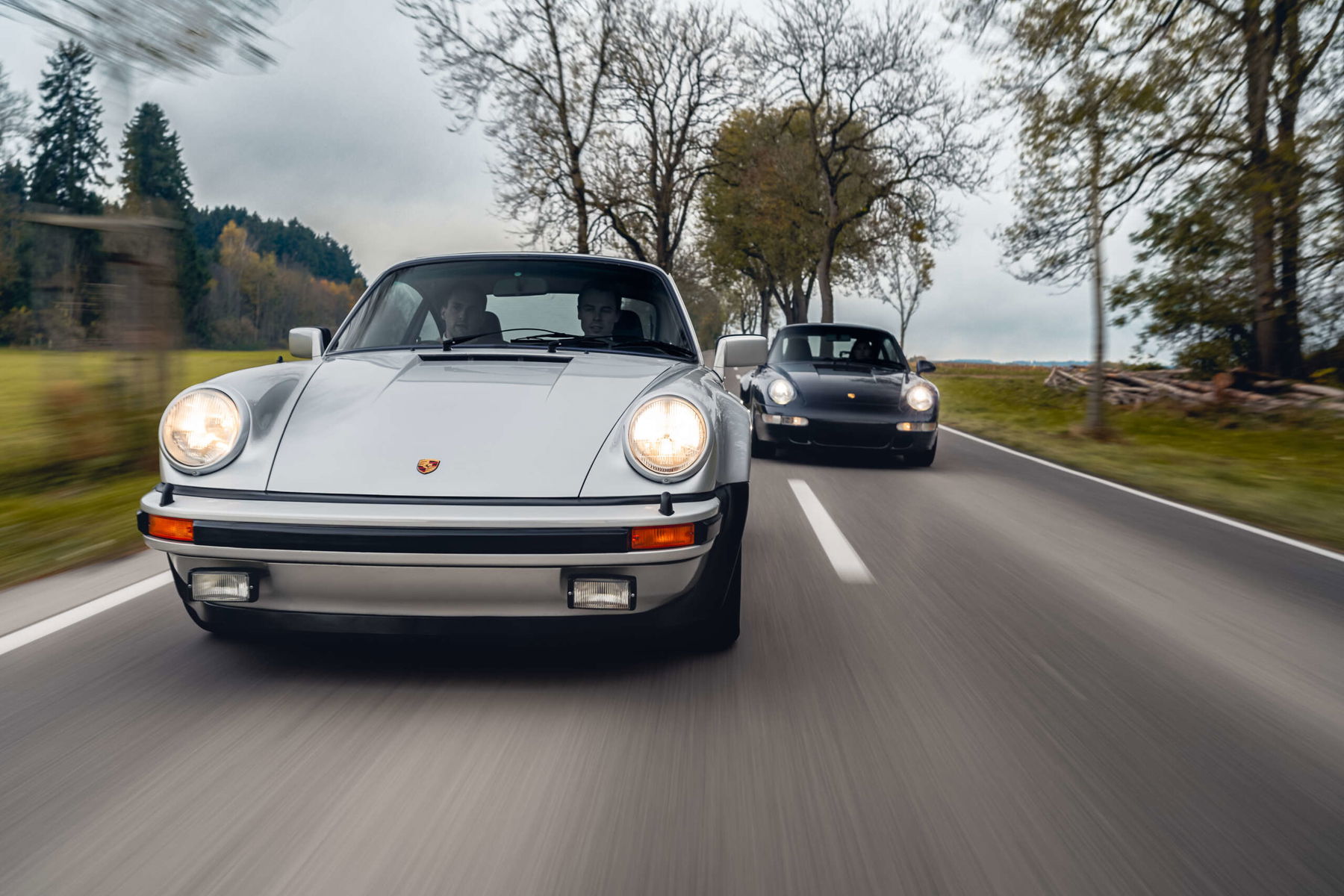
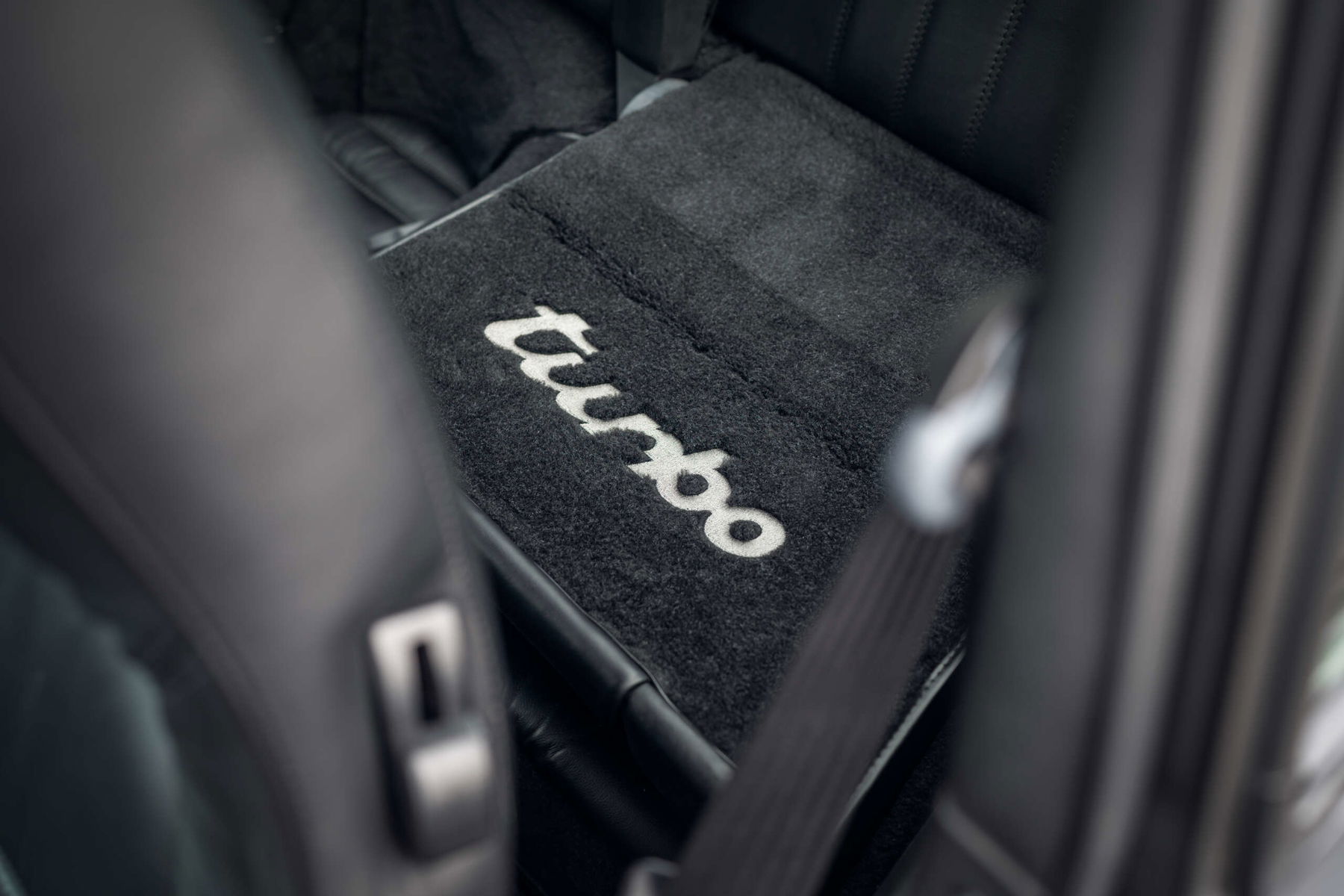
The Porsche 964 Turbo 3.3 marks the first big step in the Turbo evolution
The changes to the Porsche 964 Turbo were more pronounced. In 1991, the impact dampers and fog lights were integrated into the bumper. Between the front apron and hood, the rubber lip became much narrower. Another distinguishing feature was the more streamlined exterior mirrors. At the rear, the windshield wiper grabs attention as well. It no longer originates from the spoiler, but from the rear window itself. Also new on the 964 Turbo are the exhausts on both sides.
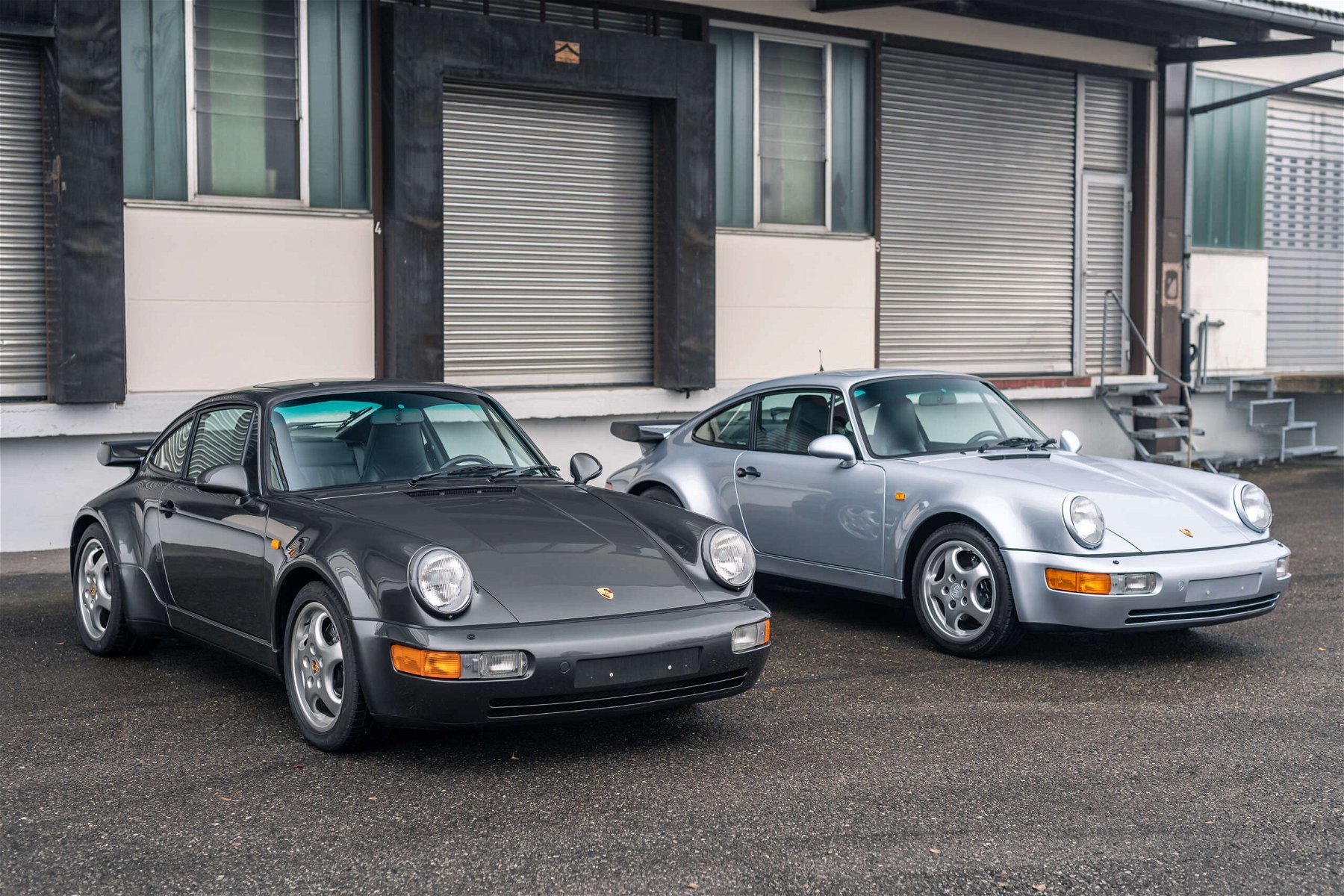
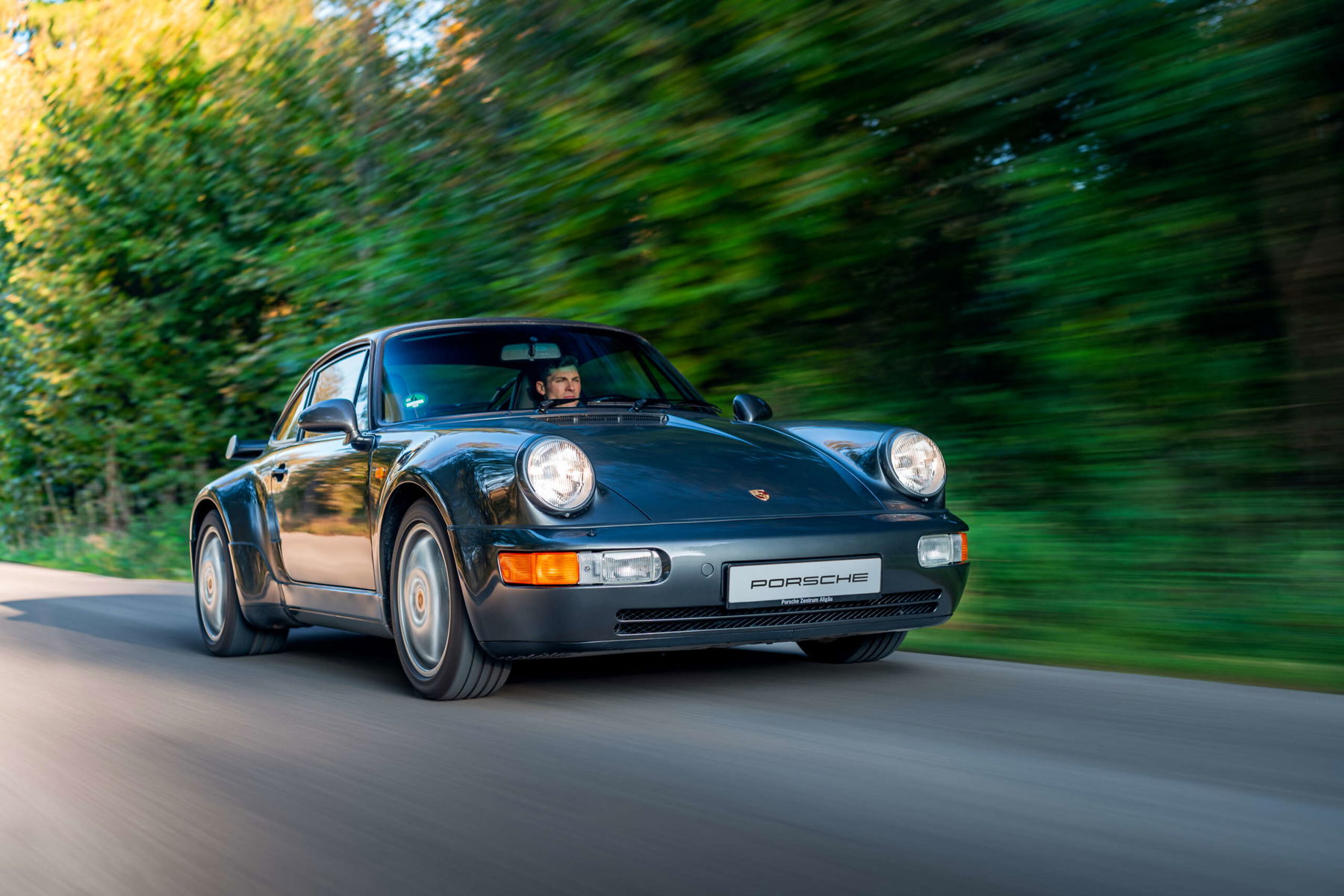
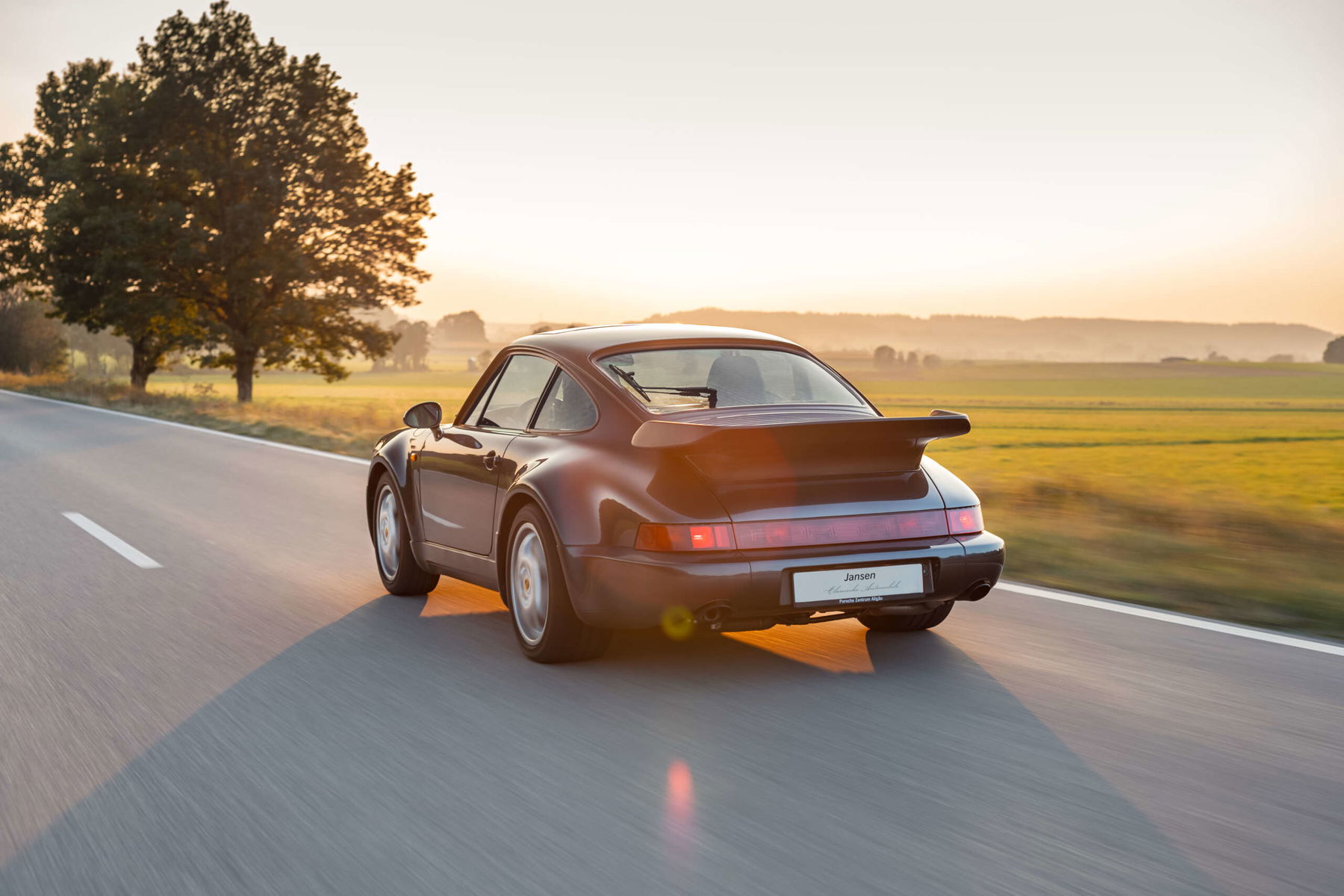
When designing the 993 Turbo, Porsche took a smoother approach
In our quartet, the prize for the most independent look undoubtedly goes to the Porsche 993 Turbo. The design language has become much more fluid. Its curves seem almost feminine. With its front and rear bumpers integrated, rather than bolted on, it got a slicker silhouette overall. Same applies to the headlights. They are no longer fully exposed to the wind, but blend in with the flatter fenders. Instead of being integrated into the apron as before, the washer nozzles now found a place in the low-slung fenders.
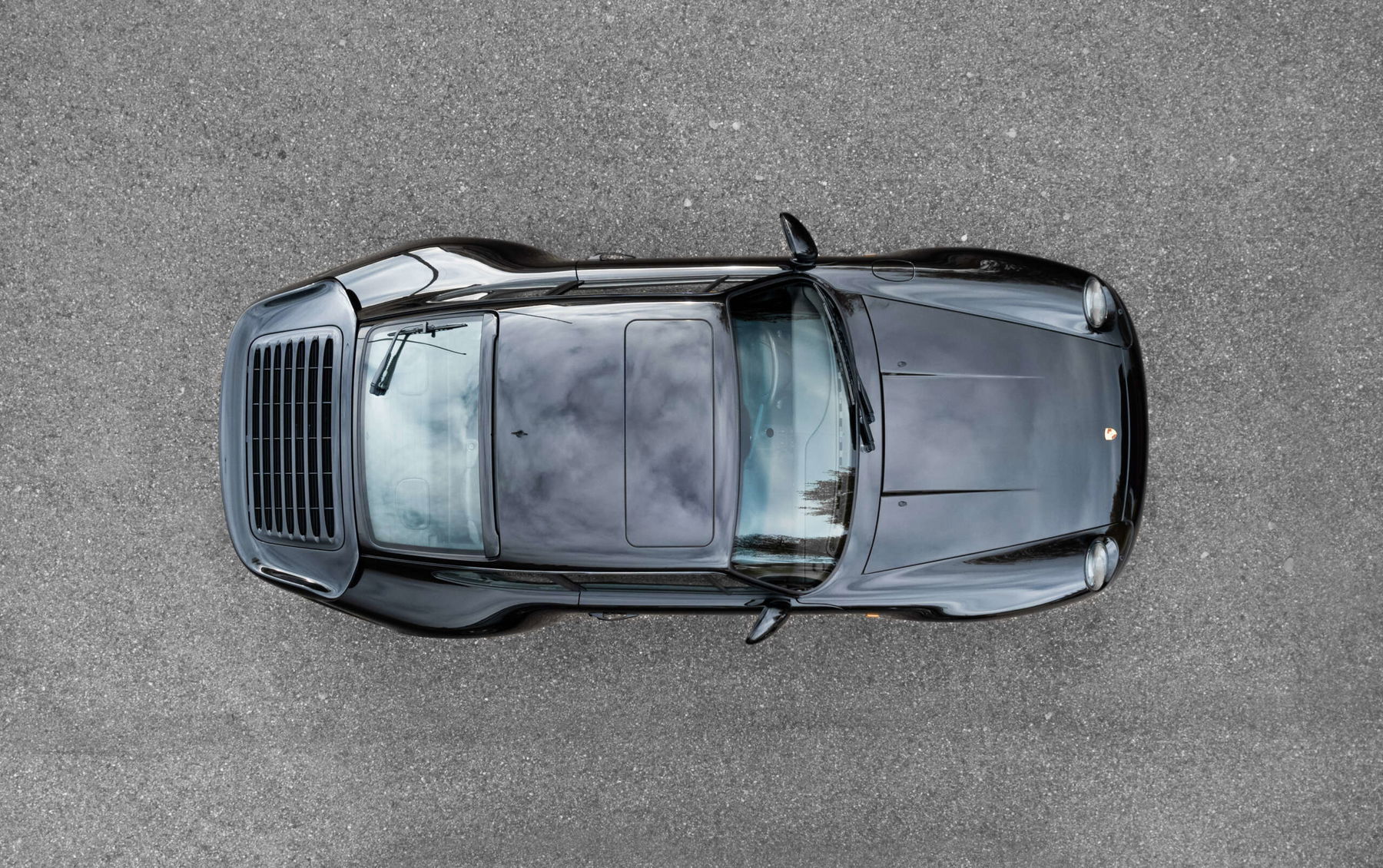
The top view of a Porsche 993 Turbo is stunningly beautiful.
Also gone were the days of the characteristic step between the front apron and hood. Instead, the 993 Turbo received prominently large, rounded air intakes at the front. Modern door handles and a softer hip curve give the 993 a tremendously sleek appearance. With the beautifully drawn rear spoiler, the result is an almost unbeatable work of art. The top view of a Porsche 993 Turbo is stunningly beautiful. Period.

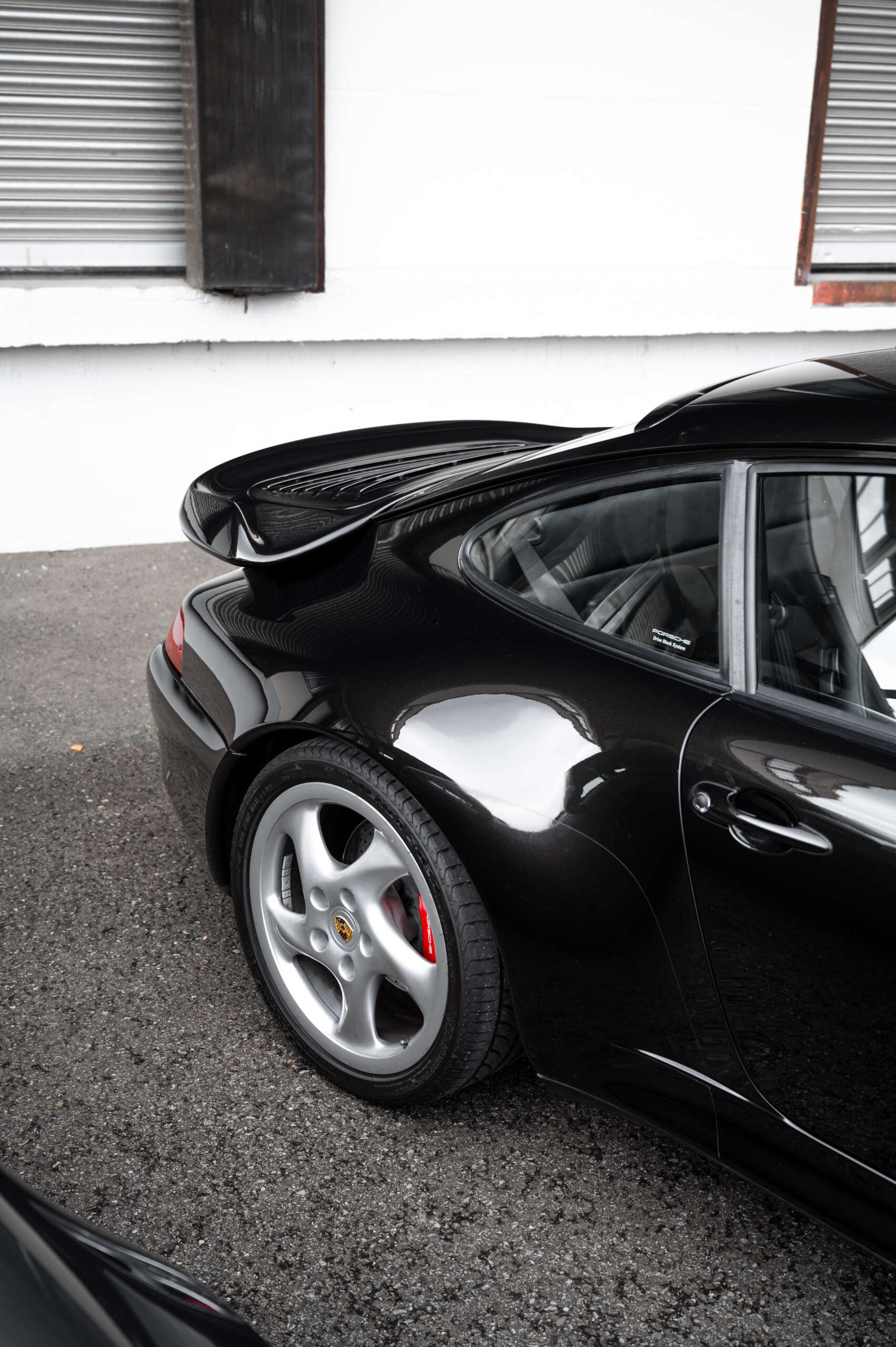
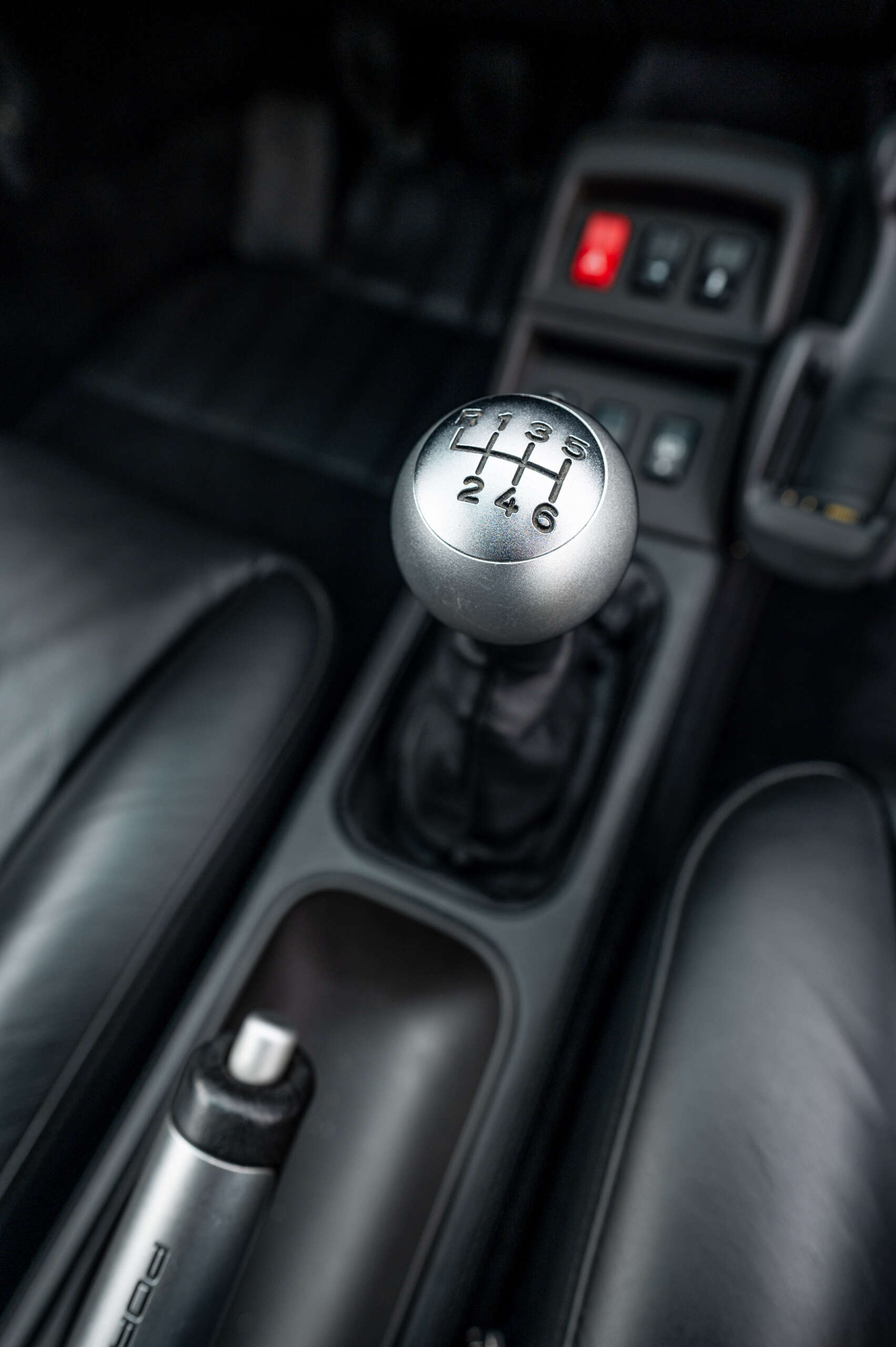
Thanks to its continuous upgrades, the Porsche 911 Turbo cemented its standing
Viewed in isolation, the changes from model to model are quite subtle. However, if you compare the 930 Turbo with the 993, it feels like there’s a world of difference. This cautious tinkering with the concept also continued under the beautiful hood. Starting at 260 hp with the 930, Porsche managed to squeeze out a whopping 408 hp of the 993 Turbo’s aircoold lump. That made the Turbo a real supercar killer!
The engineers in Zuffenhausen also constantly revised the chassis. Funnily, a reduction in driving noise from the 930 Turbo 3.0 to the 3.3 was proudly advertised as an increase in ride comfort back in the day. The 964 celebrated the departure from torsion bar suspension, which had been used since 1948. MacPherson struts at the front, coil springs at the rear, power steering and ABS were introduced. In addition to simply more grip and improved handling, the 911 Turbo thus also became more civilized. In the 993 Turbo, Porsche even used all-wheel drive for greater driving stability and traction.

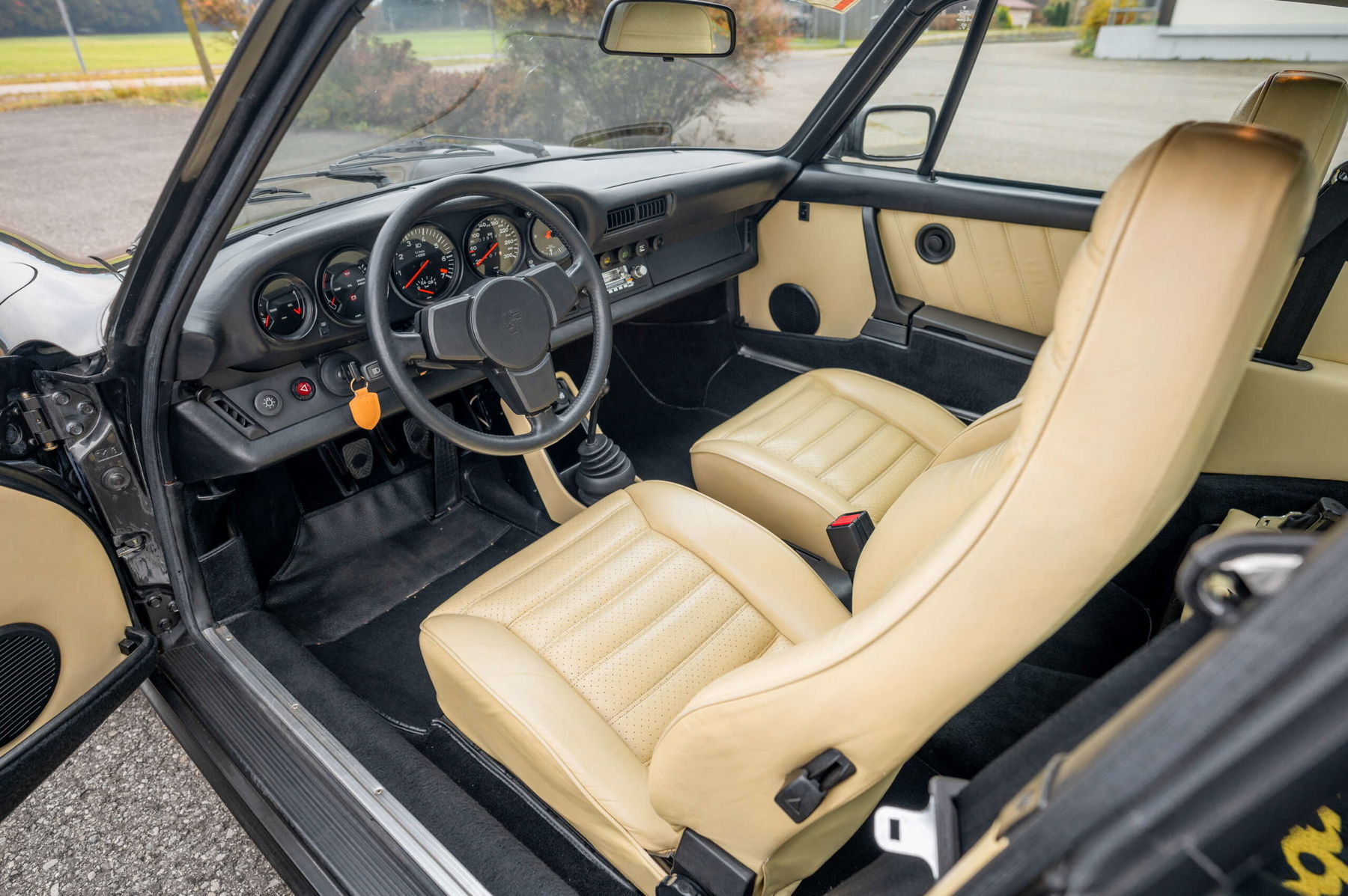
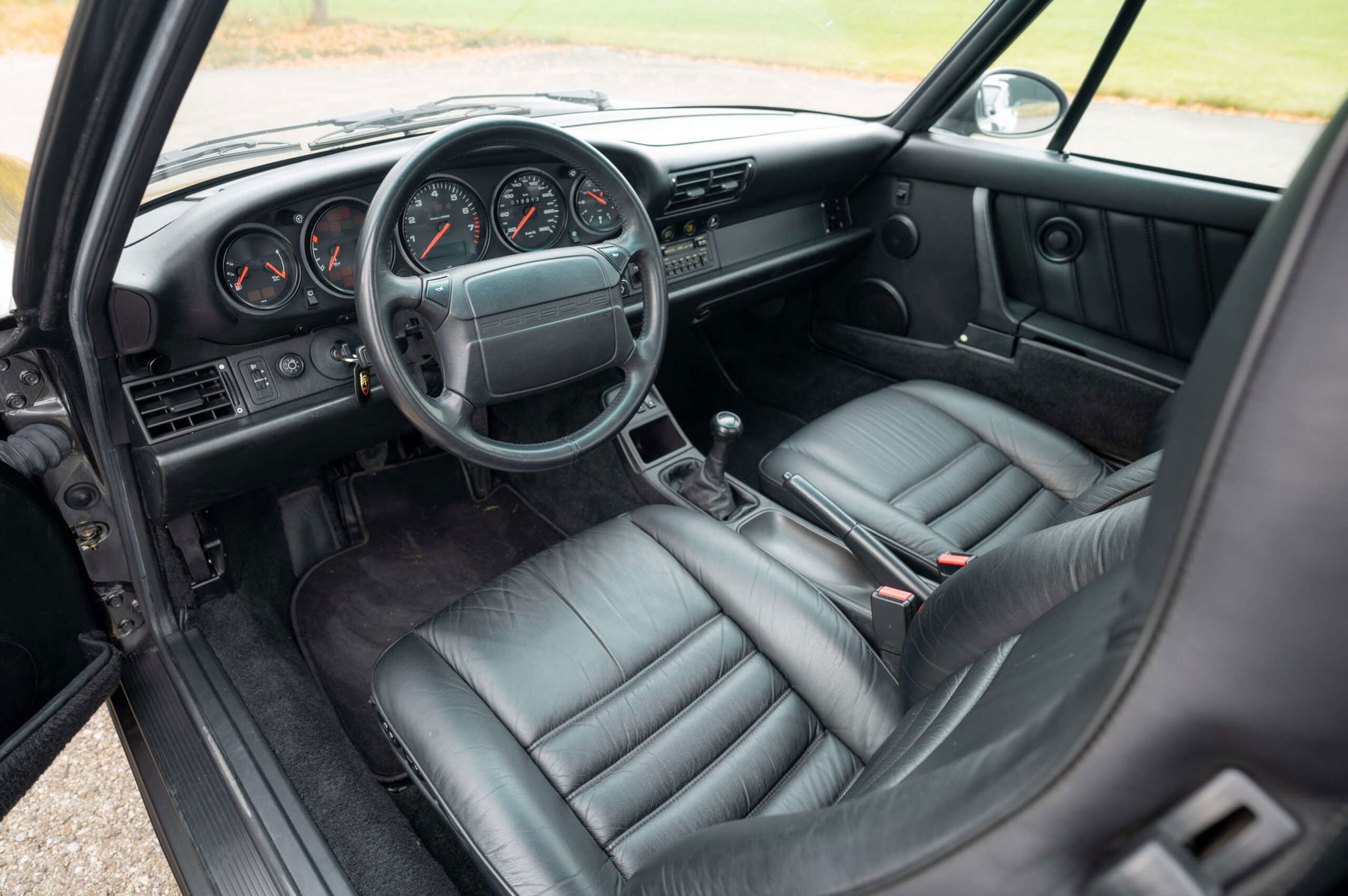

In Zuffenhausen cars aren’t made from scratch all the time, they’re being evolved!
The quartet is an example of how cars have been built in Zuffenhausen for 73 years. Obsessed with detail, the initial concept is refined further and further. It’s not a Porsche theme to be too eager for revolutions. Nevertheless, the adaptations always reflect the spirit of the times. Even if new models at Porsche traditionally have a rather difficult start with the long-established fans.
In the air-cooled era, the Porsche 911 Turbo was already a myth. It lifted an accessible and reliable sports car into the league of supercars. With the Turbo, Porsche showed that driving performance and usability were not mutually exclusive. To drive them every day, they are certainly too valuable today. But capricious in this league of supercars are rather the competitors.
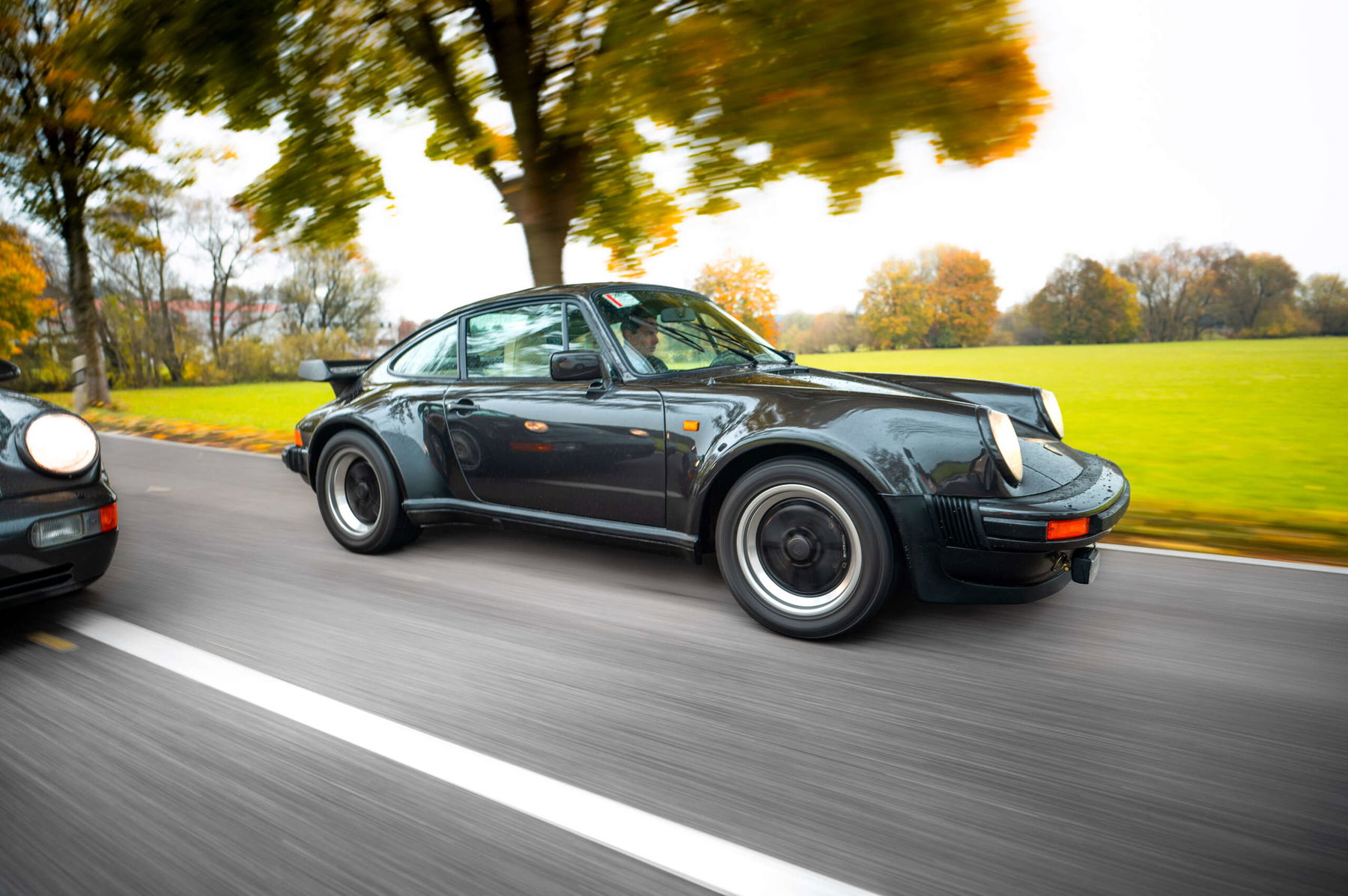
Even among its aircooled siblings, the Porsche 911 Turbo holds a special position
“The Porsche 911 Turbo has always been the epitome of brutality for me, and I felt it was the spearhead of performance cars. Its technology is so impressive that it turns into an impressively emotional work of art,” says owner Jan Jansen. Professionally, he is always on the hunt for something special, and this is also reflected in his favorite private quartet. All in exemplary condition, with impeccable history.
“The Porsche 911 Turbo has always been the epitome of brutality for me, and I felt it was the spearhead of performance cars. Its technology is so impressive that it turns into an impressively emotional work of art,” says owner Jan Jansen.
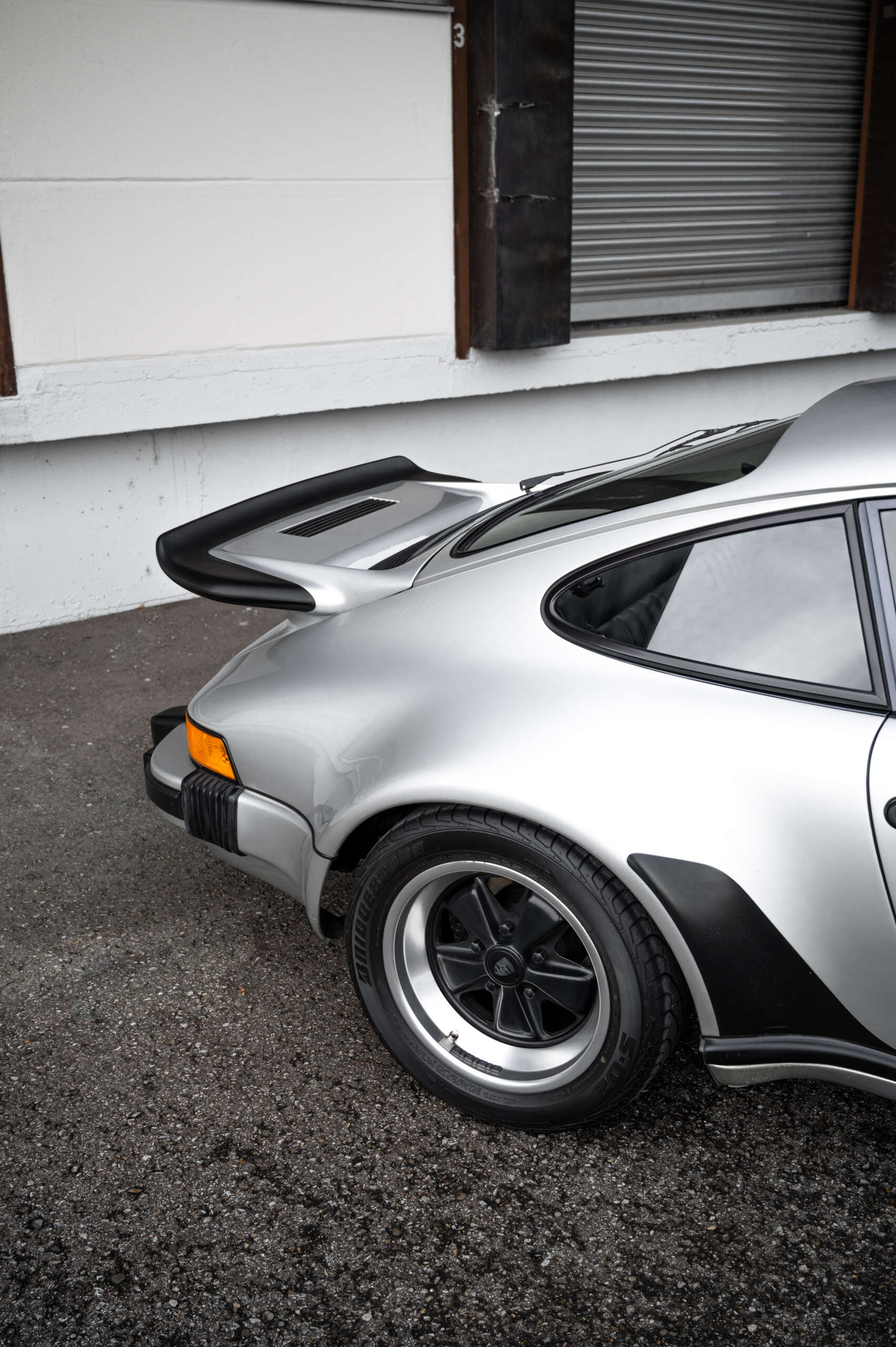
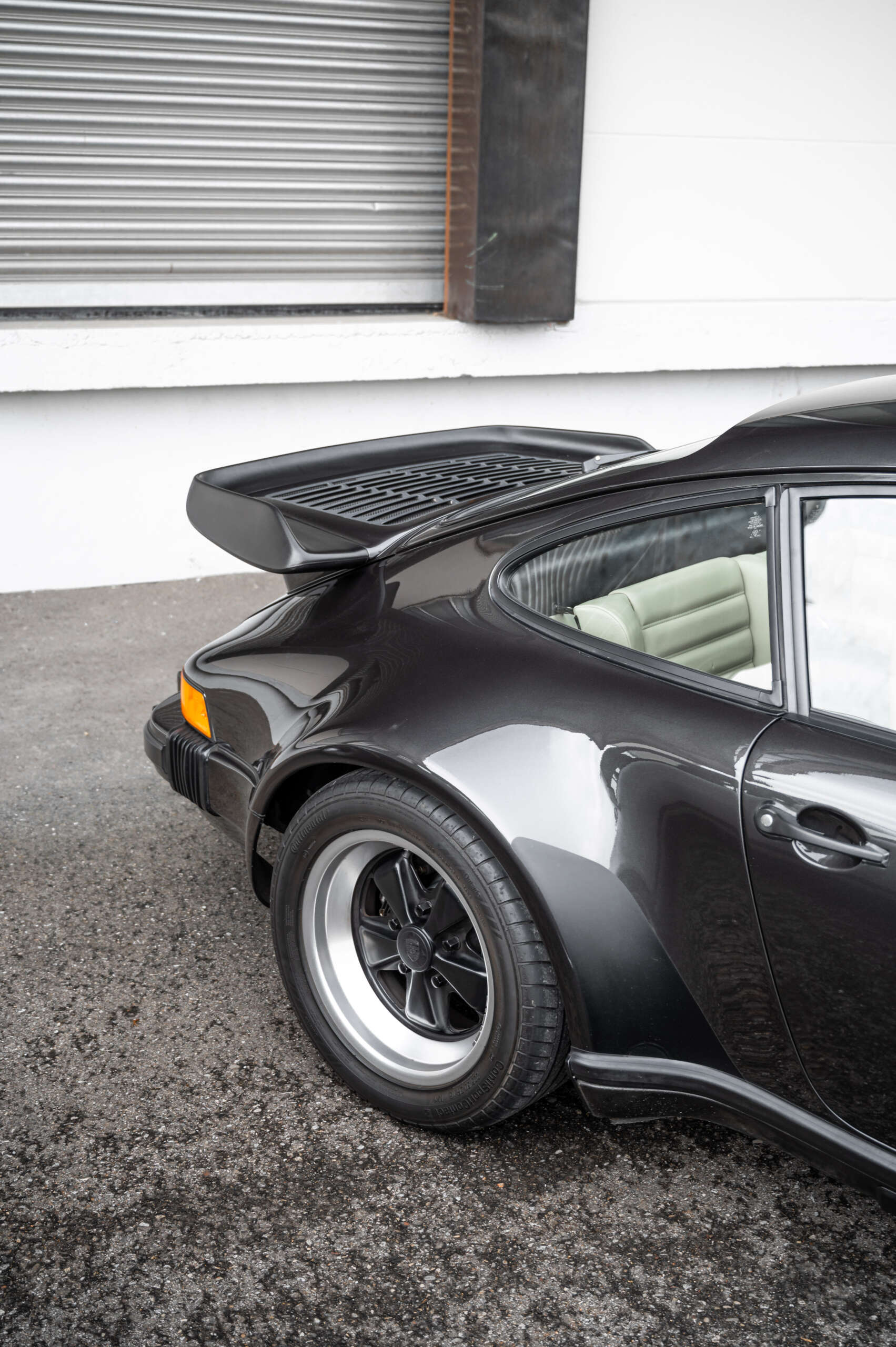
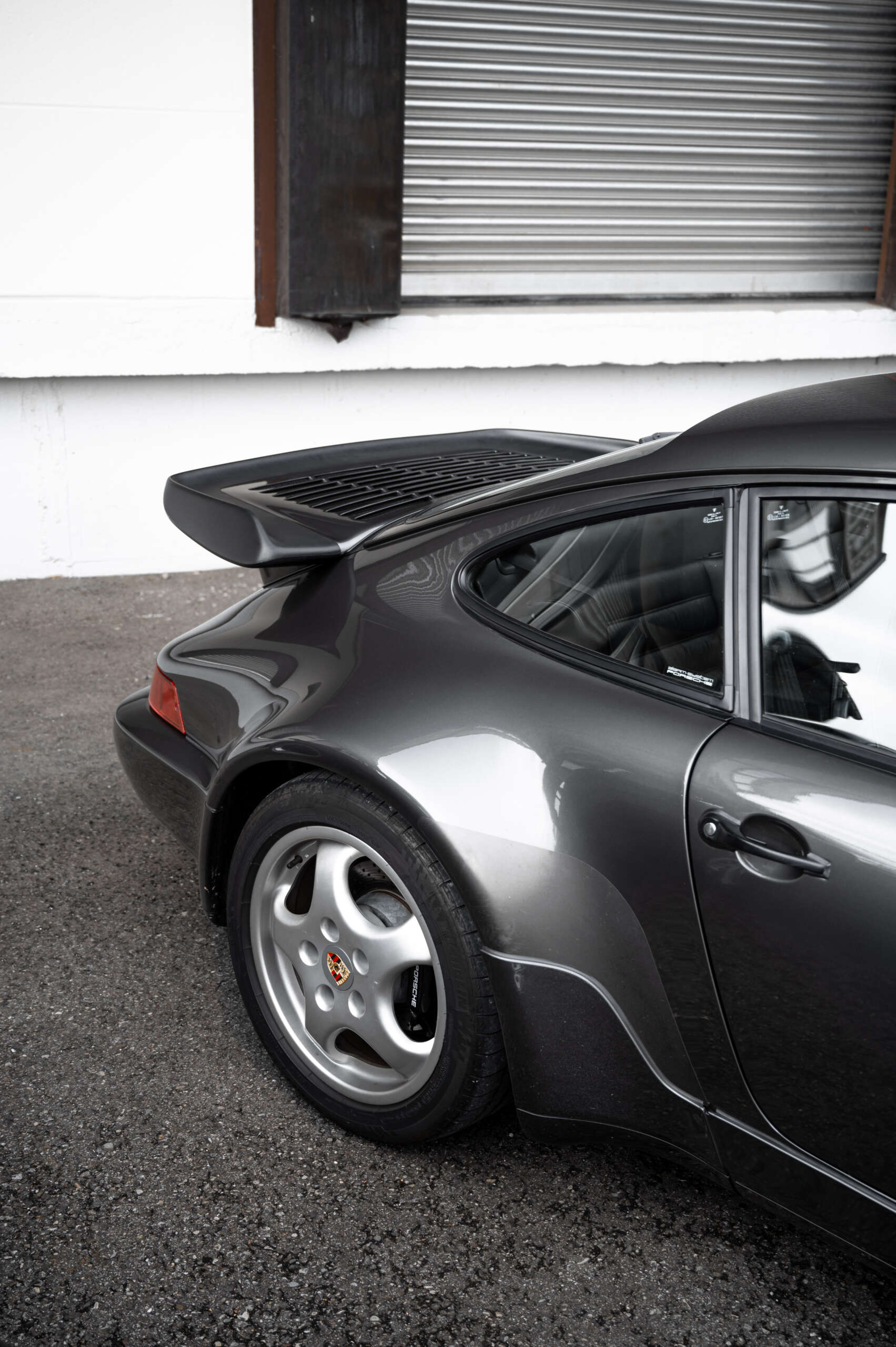
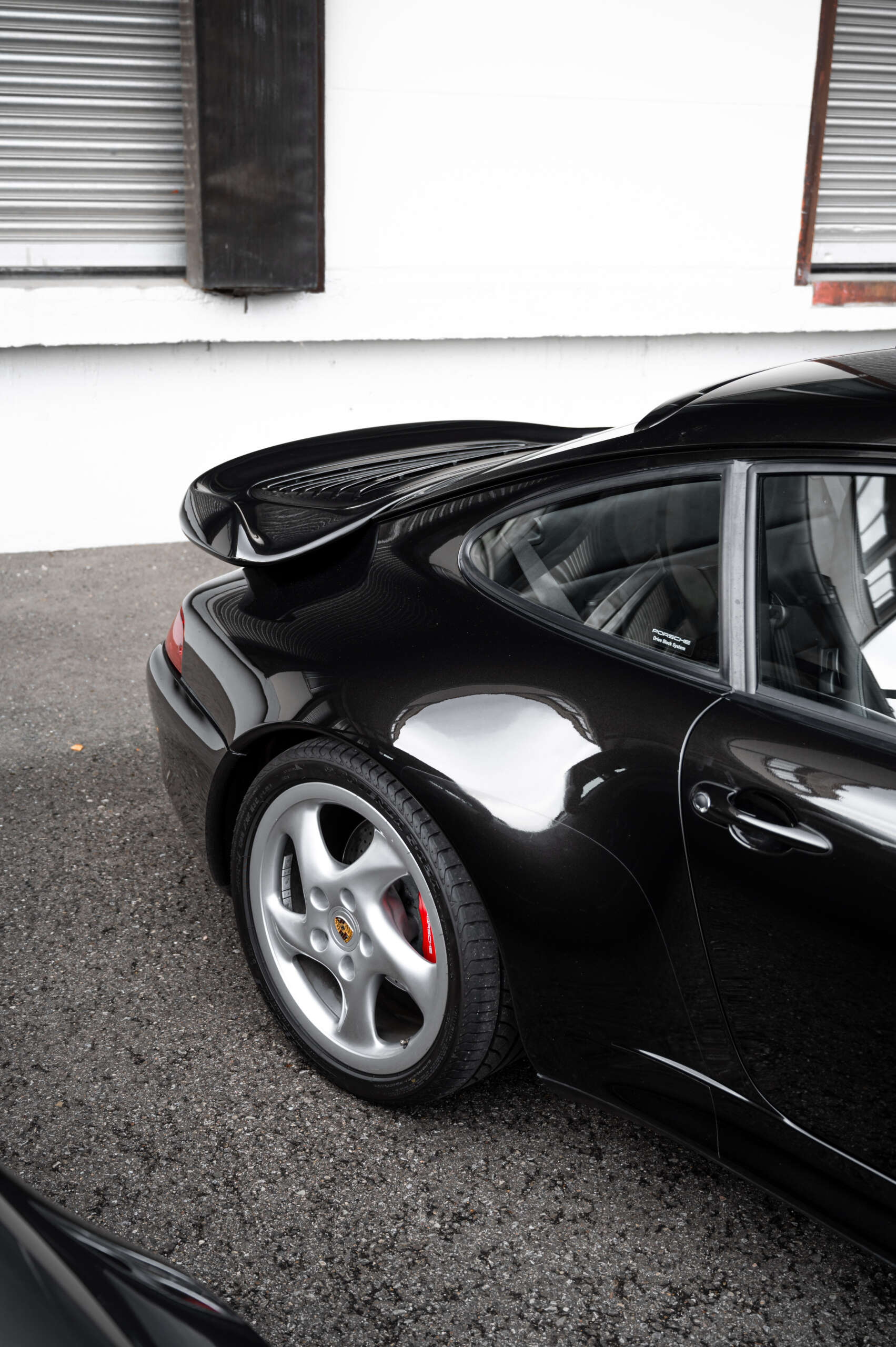
It would be beyond the scope of this article to try to describe all the impressions and peculiarities. However, a look at the interior is not to be missed here. The evolution of it was similar to that of the exterior – purposeful, without stylistic breaks. While the Porsche 930 Turbo 3.0 and 3.3 are still dominated by the flair of the 70s, the 964 has an airbag steering wheel and a new climate control panel. With the silver applications and dials, the 993 Turbo appears more up-to-date and fresh. The clear, straight lines unify the dashboard of all models.

Every Porsche 911 Turbo has its own special features. So it’s hard to choose…
When asked about his personal favorite, Jan Jansen can’t name a clear number one. “They all have their own charms and are very different in terms of driving. The widowmaker Porsche 930 Turbo 3.0 with its big turbolag and very peaky power curve is just as special as the more comfortable 993 Turbo as the first biturbo 911. From a buyer’s point of view, the Porsche 964 Turbo might be the most interesting. Regardless of whether it’s a 3.3 or a 3.6, its very low production numbers are already sliding it into the role of primus inter pares.”
From a buyer’s point of view, the Porsche 964 Turbo might be the most interesting. Regardless of whether it’s a 3.3 or a 3.6, its very low production numbers are already sliding it into the role of primus inter pares.
Jan Jansen, JANSEN classische Automobile
One thing is certain: air-cooled Porsche 911 Turbos can’t be found on every corner. Especially not as a quartet. Are these vehicles a good investment financially? They certainly are. But the greatest return is certainly not monetary, but emotional. Jan Jansen knows this and likes to enjoy his 911 Turbos on Alpine tours. We absolutely support this approach. Although these vehicles are worth a lot of money, they are to a certain extent unreasonable sources of pleasure on four wheels. And we could very well get used to the sight of this turbo quartet.
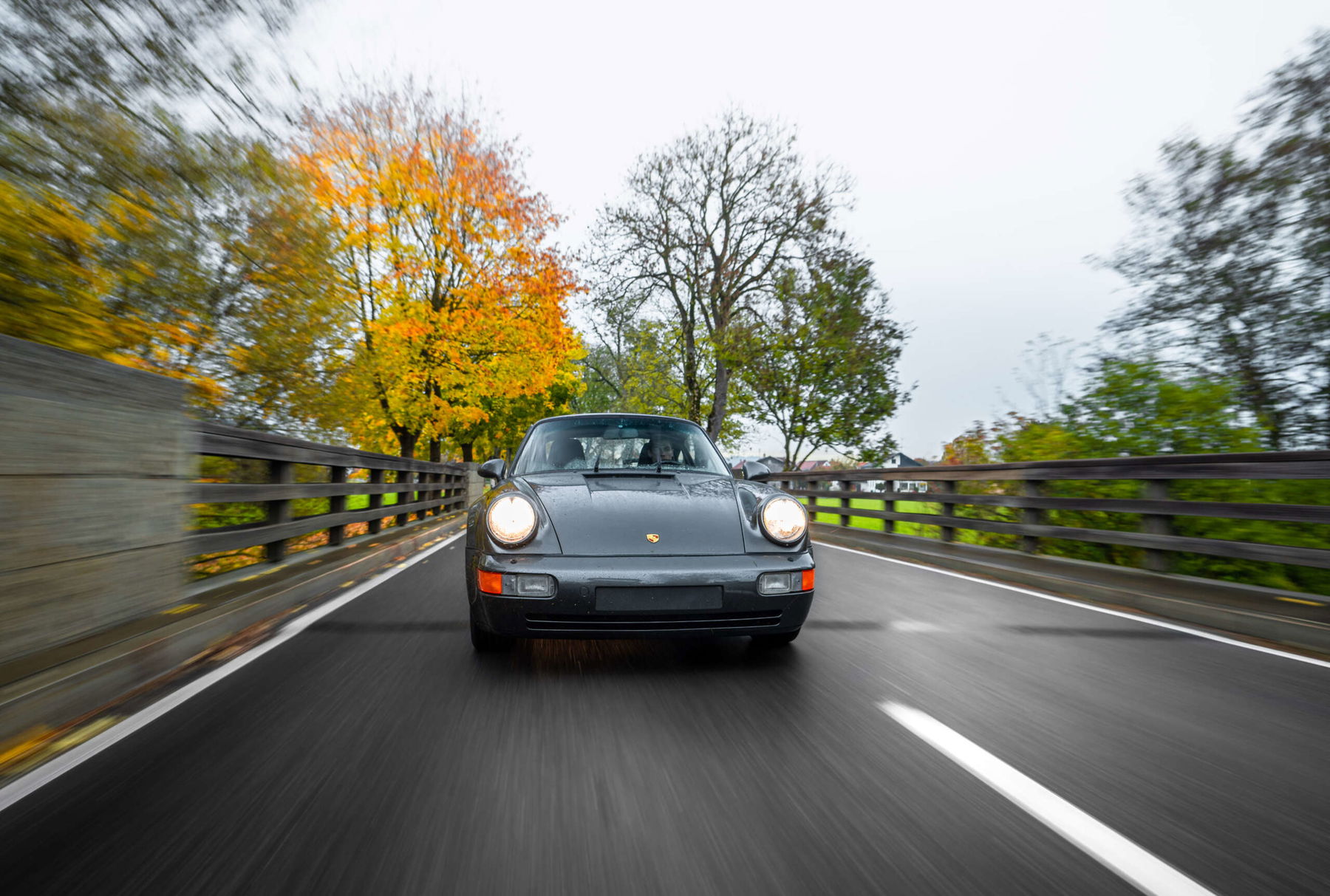
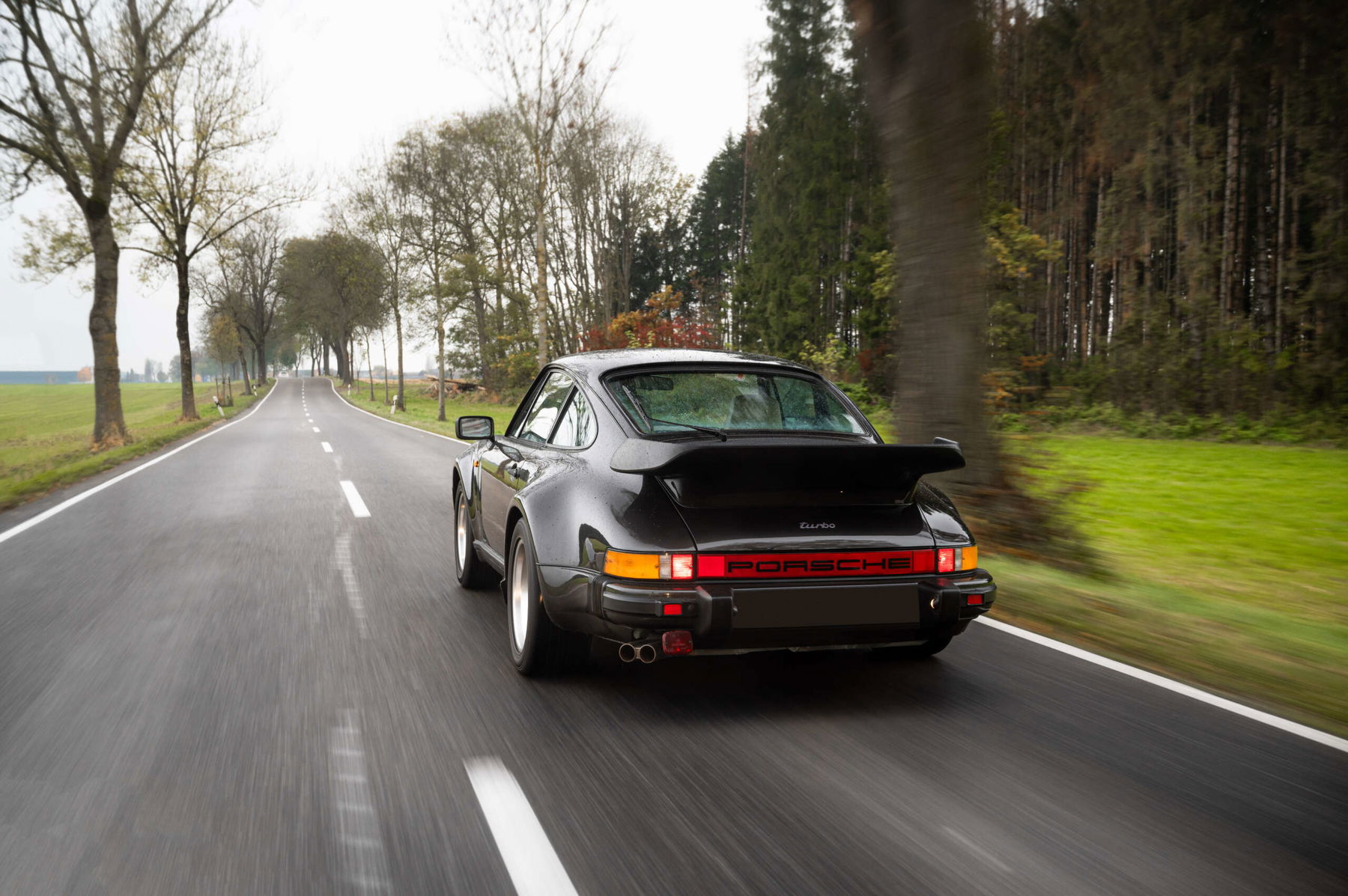
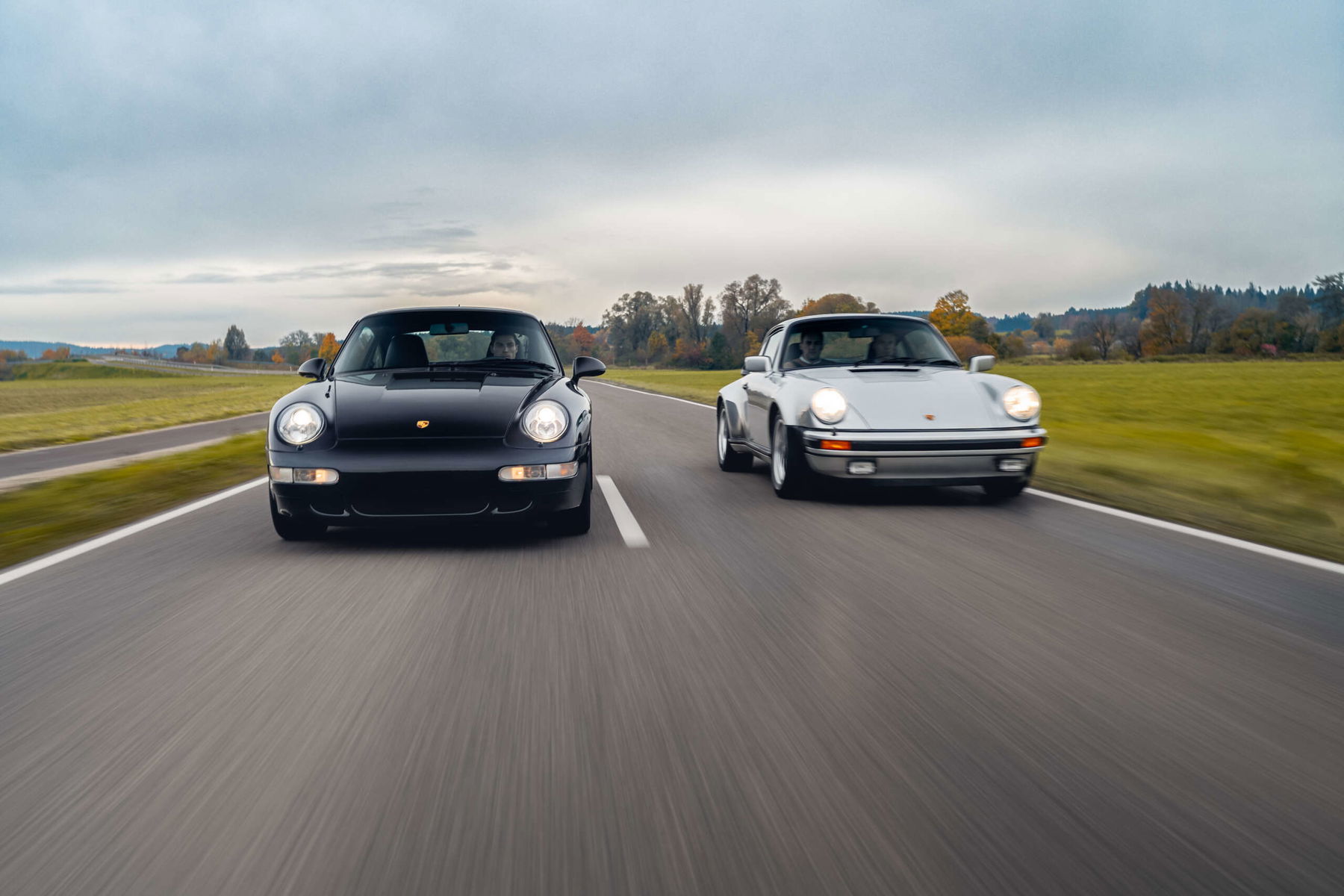
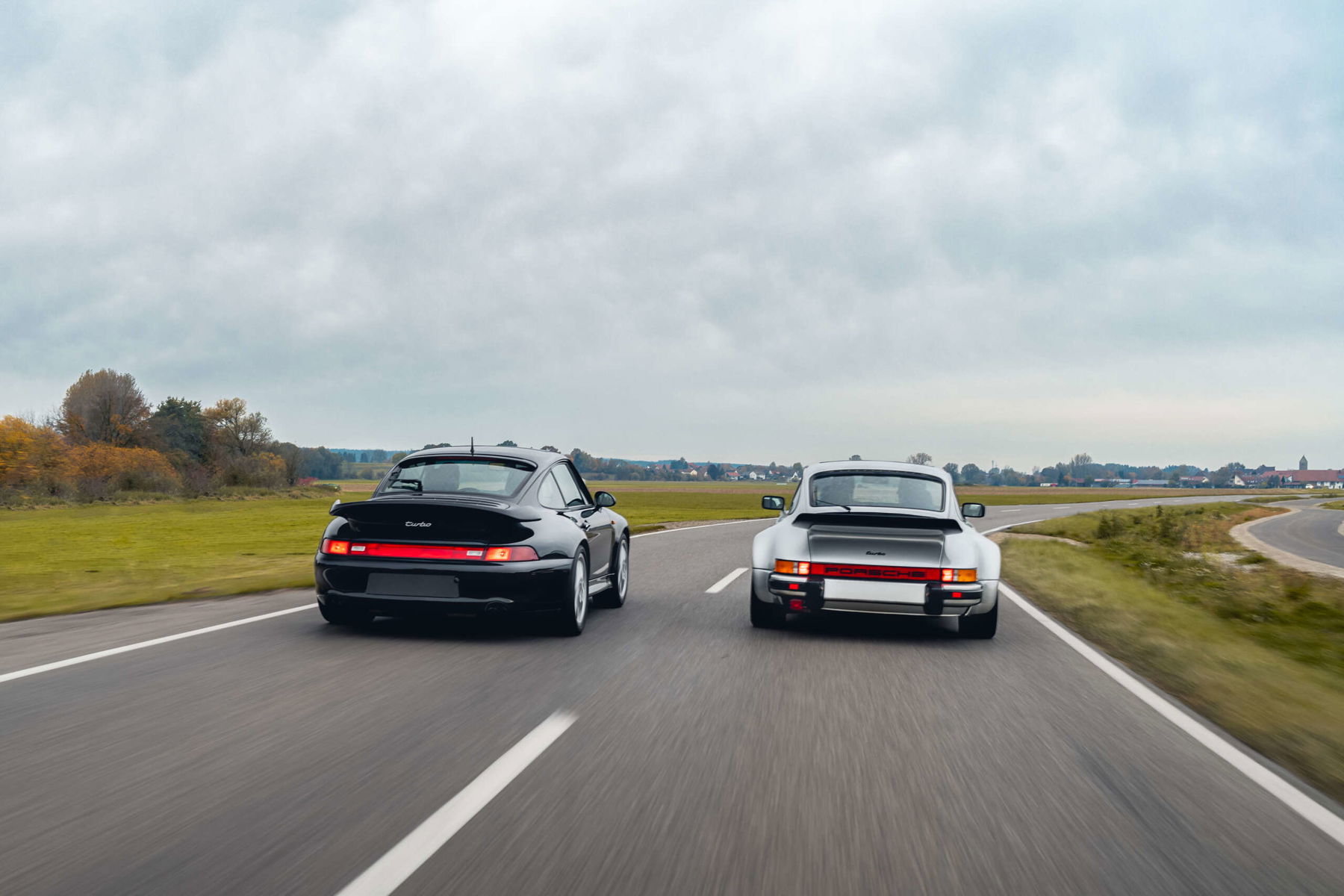
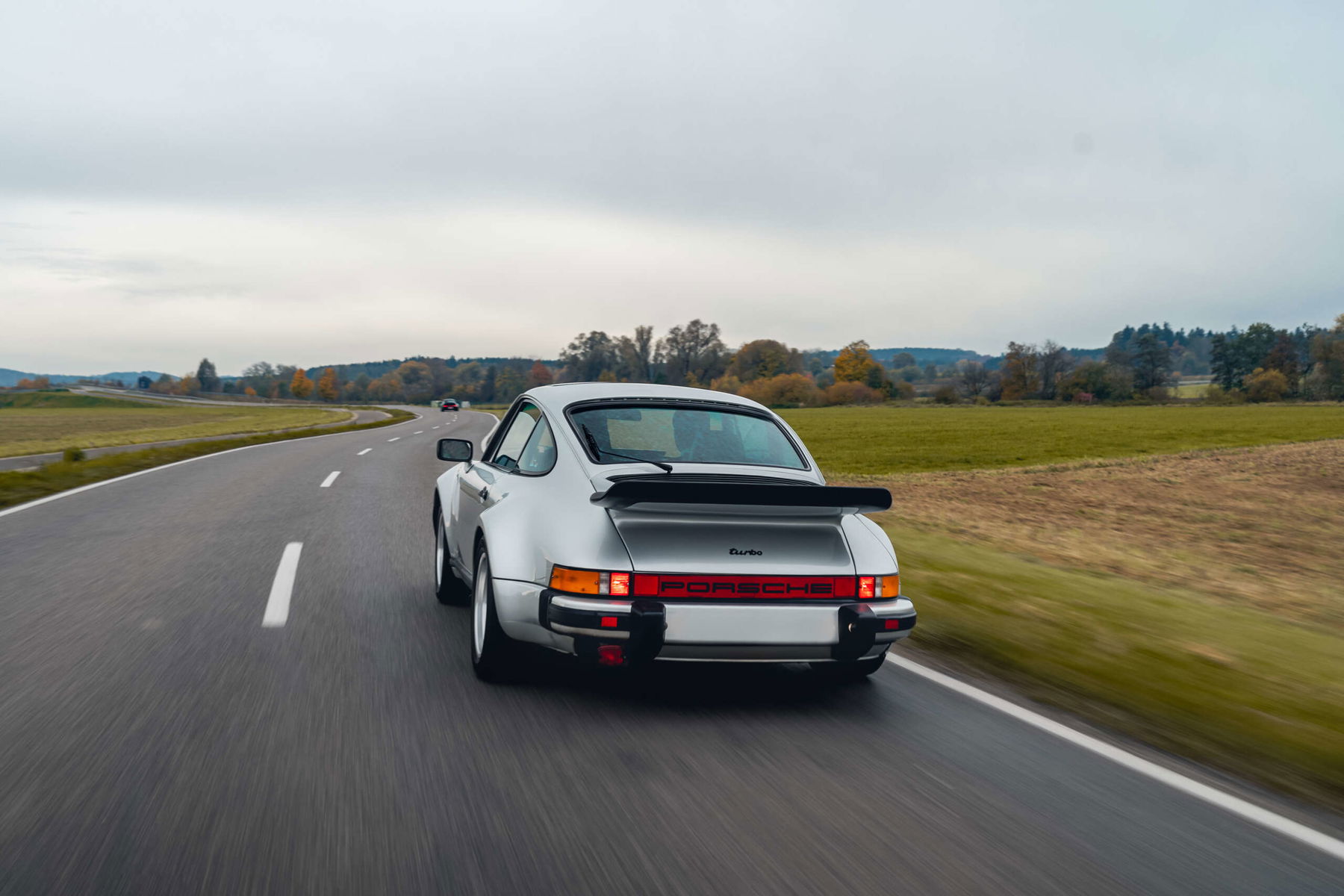

© pictures: Steffen Miethke and Simon Griebel
Elferspot magazine
You have reached your article limit for this month.
Become an Elferspot Member now and get unlimited access to our Elferspot Magazine and other features!
- No obligations or charges.
- We help you find your dream car: get newly added cars straight into your mailbox.
- Your own watch list for your favorite cars.
- Unlimited access to Elferspot Magazin.
- -10% welcome discount for Elferspot textile products
- Successfully sell your Porsche via Elferspot.

